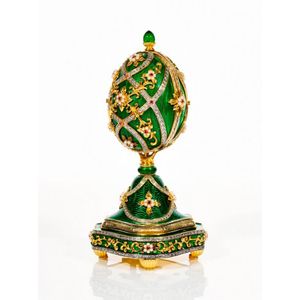Qing Dynasty Cloisonne Enamel Peony Moon Flask
You must be a subscriber, and be logged in to view price and dealer details.
Subscribe Now to view actual auction price for this item
When you subscribe, you have the option of setting the currency in which to display prices to $Au, $US, $NZ or Stg.
- Qing Dynasty - The Qing Dynasty was the last imperial dynasty of China, ruling from 1644 to 1912. It was established by the Manchu people, who originated from the northeastern region of China. The Qing Dynasty was preceded by the Ming Dynasty and followed by the Republic of China.
- Ming Dynasty - The Ming Dynasty was a ruling dynasty of China from 1368 to 1644. It succeeded the Yuan Dynasty and preceded the Qing Dynasty. The Ming Dynasty was established by Zhu Yuanzhang, a former Buddhist monk who became a rebel leader and eventually overthrew the Mongol Yuan Dynasty. During the Ming Dynasty, China experienced a period of relative stability and prosperity. The government was centralized and bureaucratic, with the emperor at the top of the hierarchy. The Ming Dynasty is known for its cultural achievements, including the development of porcelain, the invention of movable type printing, and the construction of the Great Wall of China.
This item has been included into following indexes:
Visually similar items

A large cloisonne enamel 'dragon' moonflask late Qing dynasty, the flattened globular body supported on a slightly splayed foot encircled with a key-fret border, decorated on either side with a blue-ground medallion enclosing a red dragon clasping a flamin

A Chinese cloisonne moon flask (Bian Hu), Qing Dynasty (1644-1911), 18th/19th century, decorated to the compressed sides with a central large peony mudan surrounded by a profusion of colourful foliage, chrysanthemum and smaller peony heads springing up fro

An overglaze enamel gilt decorated ceramic gourd vase, Japanese, Meiji Period (1868-1912). 41 cm high

House of Faberge 'Garden of Jewels' Imperial musical egg crafted in green guilloche enamelled sterling silver, highlighted in 24ct gold, set with 32 rubies, 155 cultured pearls and amethysts, playing Mozart's Magic flute, limited edition. Height 20 cm
